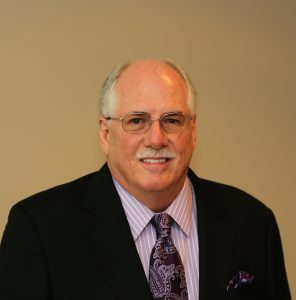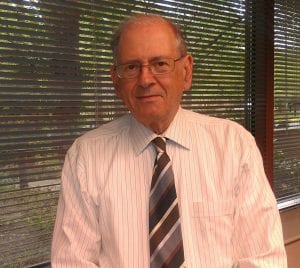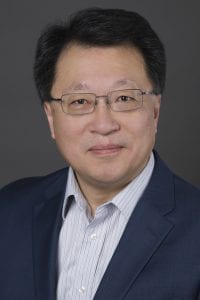Tuesday April 16, 2019 – Opening Keynote: Communications During Natural Disasters: Fixed Wireless vs. Amateur Radio
Bill Poellmitz
President & CEO of ClearSky Technologies, Inc.
Mr. Poellmitz oversees all company operations at ClearSky, and ensures that leadership is focused on flawless execution of the company’s strategic plan. A co-founder of ClearSky, Mr. Poellmitz played a major role in defining the “hosted services” business model. In 1992, he co-founded Cerulean Technology, developer of mobile data software for law enforcement, where he served as CFO and VP Marketing. After venture funding was completed, Cerulean was sold for $150 million. Earlier, Mr. Poellmitz ran an eight-person international consulting firm, and managed the Latin American and Far East units of Orion Research, a developer of chemical sensors for laboratory and medical applications. Mr. Poellmitz also served as a committee chair in the CDPD Forum and was co-founder and co-chairman of the WAP Developer Expert Group of the WAP Forum. From 1988 to 1995, he served as a Board Member for three cellular companies in the Caribbean. Mr. Poellmitz holds degrees in Electrical Engineering and Economics, and an MBA, and is currently pursuing a doctorate in business at the University of Florida. He has been an amateur radio operator since the age of 14, and is passionate about travel, foreign languages and trivia.
Abstract – Natural disasters can occur virtually any time or anywhere without warning. Even though our society has taken advantage of technology to aid in the prediction of certain events, the results can still be devastating. Two recurring themes related to disaster mitigation are planning and communications. This presentation will focus on the current technology infrastructure for disaster relief, how it functions, and how it can be improved. Specific observations from recent Caribbean hurricanes Irma and Maria are included. In addition to exploring the strengths and weaknesses of different network options, we will describe the role of licensed amateur radio volunteers in improving communications during and after natural disasters.
Wednesday April 17, 2019 – Morning Keynote: Interoperability for Heterogenous Information Systems
Dr. Robert Kahn
CEO and President of the Corporation for National Research Initiatives (CNRI)
Robert E. Kahn is the CEO of Corporation for National Research Initiatives (CNRI), which he founded in 1986. He received a B.E.E. from the City College of New York in 1960, and M.A. and Ph.D. degrees from Princeton University in 1962 and 1964 respectively. He worked on the Technical Staff at Bell Laboratories and then became an Assistant Professor of Electrical Engineering at MIT. In 1966, he took a leave of absence from MIT to join Bolt Beranek & Newman (BBN), where he was responsible for the system design of ARPANET, the pioneering packet switched computer network. In 1972, he moved to DARPA and subsequently became Director of DARPA’s Information Processing Techniques Office (IPTO). While Director of IPTO, among other things, he initiated the Strategic Computing Program, the largest computer research and development program that had ever undertaken by the federal government. Dr. Kahn conceived the idea of open-architecture networking. He is a co-inventor of the TCP/IP protocols and was responsible for originating DARPA’s Internet Program. More recently, he has been involved in the development and deployment of the Digital Object Architecture, an open architecture for managing information in the Internet. Dr. Kahn has numerous publications and has received many honorary degrees and fellowships. Among his many awards, he is a recipient of the 1997 National Medal of Technology, the 2001 Charles Stark Draper Prize from the National Academy of Engineering, the 2002 Prince of Asturias Award, and the 2004 A. M. Turing Award from the Association for Computing Machinery, the 2004 Presidential Medal of Freedom. He was the recipient of the Japan Prize in 2008, the Benjamin Franklin Medal in 2018 and was one of the inaugural winners of the Queen Elizabeth Prize for Engineering in 2013. He is a member of the National Academy of Engineering and the National Academy of Sciences.
Abstract – Dr. Kahn will discuss the role of the digital object architecture in managing digital information and the role of the Digital Object Interface Protocol to enable interoperability among a diverse collection of new and emerging information systems that involve 5G, big data, AI, blockchains and so forth. For almost twenty years, IEEE and other major STM journal publishers have been using the identifier portion of this architecture to persistently identify their articles; but the potential of the architecture goes far beyond its use in networked publications and will be discussed.
Wednesday April 17, 2019 – Afternoon Keynote: Intelligent & Autonomous SDN Resiliency
David H. Lu
Vice President – SDN Platform & Systems, AT&T Labs
David Lu is currently responsible for development and engineering of AT&T next generation ECOMP platform and Open ECOMP (ONAP) to enable the AT&T network virtualization (SDN) and target OSS/BSS transformation including API, micro-services, policy control & orchestration, hyper-automation, and advanced data analytics. He leads an organization with more than 3,000 people across the globe.
David is a well-respected leader in large scale, real time software architecture and development, network performance and traffic management, work flow and policy-controlled automation, large databases and big data implementation/mining/analytics, machine learning, artificial intelligence, software reliability and quality, and network operations process engineering. He has led major software platform transformation initiatives from sales to network/service delivery/assurance, and billing platforms. Examples of his achievements include large scale platforms he has led and engineered that process annually: 984 Trillion network performance events and 348 Billion alarms with 99.99%+ automation; 60 Million dispatches with 14.4 Billion automated manual steps; and over 90 Billion API transactions.
Since joining AT&T Bell Labs in 1987, he has served in various leadership positions at AT&T. He has led multiple numerous automation initiatives in AT&T that resulted in multi-billion dollar savings in the past 15 years and won the AT&T CIO 100 Award in 2010. He holds 43 patents and has frequently appeared as a guest speaker at technical and leadership seminars and conferences throughout the world. He received numerous industry awards including the 2015 Chairman’s Award from IEEE Communication Society for Network and Systems Quality and Reliability and 2017 CIE AAEOY (Asian America Engineer of Year) Award. He has also been very active in community organizations and activities including AT&T APCA, DFW-CIE, and DFW Asian American Chamber of Commerce. He was recognized by AT&T APCA with the 2015 Corporate Leadership Award.
He was accepted to the world-renowned Shanghai Conservatory of Music and came to the U.S. to complete his college education. He has an undergraduate degree in music, majoring in cello performance and graduate degree in Computer Science.
Abstract – As we venture into the era of SDN and 5G Networking, the speed of new technology introduction is accelerating exponentially. While the base cost structure continues to decline, the complexity of network management and control is increasing in the software driven architecture. Business demands will require unprecedented fast forwarding of new technology introduction and integration in the next 5-10 years. The enormous challenge of providing ETE software resiliency at such an accelerated pace will be a perfect storm for network service providers as well as engineers.
This talk will share AT&T’s experience in adopting the software defined network architecture using open source platforms and white box strategy to transform our network and operations support systems to rapidly introduce and integrate SDN, vRAN, and 5G technologies into our networks. We will talk about our goals, SDN architecture, platform approach, and implementation strategy. Key technologies including rule based meta-data modeling, distributed / highly scalable models, AI/ML for rapid integration, and auto-adaptive software will be described. We will also discuss how to use the latest open source tools to automate and collaborate across engineering, development, testing, deployment, and operations to achieve the self-resiliency for SDN.





